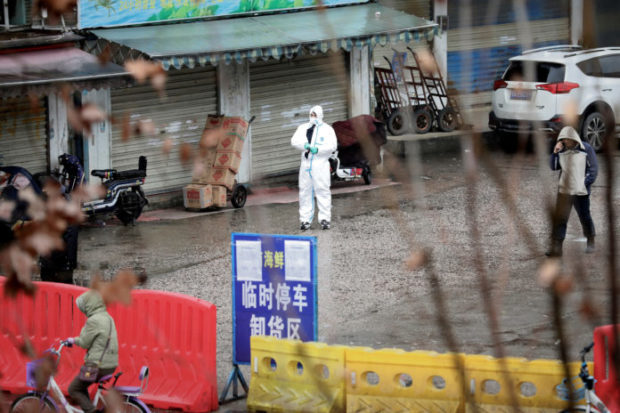The first known Covid-19 case was a vendor at the live-animal market in Wuhan, according to a scientist who has scrutinised public accounts of the earliest cases in China.
The chronology is at odds with a timeline laid out in an influential World Health Organization(WHO) report, which suggested an accountant with no apparent link to the Hunan market was the first known case.
The latest report adds weight to the theory that the virus originated from wildlife sold at the market, rather than as a leak from a Wuhan virology lab, and raises questions about how the apparent error was overlooked in the joint WHO-China inquiry.
The report, by Michael Worobey, the head of ecology and evolutionary biology at the University of Arizona, will reignite the debate about the origins of the pandemic, which remains unresolved and continues to fuel tensions between China and the US.
Zhang Jixian, at Hubei Provincial Hospital of Integrated Chinese and Western Medicine, for example, single-handedly worked out on Dec 27 that this was likely a new viral disease, human to human transmissible, with asymptomatic (lack of) presentation.
— Michael Worobey (@MichaelWorobey) November 19, 2021
In early 2021, a WHO-led team of experts spent four weeks in and around the central city of Wuhan with Chinese scientists and concluded in a joint report in March that the Sars-CoV-2 virus had probably been transmitted from bats to humans through another animal but that further research was needed. It all but ruled out the possibility that Covid-19 originated in a laboratory.
The experts interviewed Mr Chen, an accountant, with no known link to the market, who had reportedly developed symptoms on 8 December and the March report described him as the first known case.
However, the latest analysis, published in Science, highlights discrepancies in this timeline. In an interview with a Chinese news outlet, Chen described attending a clinic with a dental problem on 8 December, saying he only developed Covid symptoms around 16 December. Worobey concluded that the first known case was, therefore, a female seafood vendor who became ill on 11 December.
Worobey was one of the 15 or so experts who in mid-May published an editorial in Science demanding serious consideration of the thesis that the virus had leaked from a laboratory in Wuhan. The latest paper, he said, “provided strong evidence of a live-animal market origin of the pandemic”.
The analysis also addressed questions about whether early reports of a possible link with the Wuhan market had introduced a bias, with patients who had visited the market being more likely to be identified as Covid cases. No live mammal collected from Wuhan’s live-animal market has been screened for Sars-CoV-2-related viruses and Hunan market was closed and disinfected soon after the symptomatic cases began to rise.
To revisit the question, Worobey analysed cases reported by two hospitals before the alert was raised and found that these, too, were largely linked to the market. Those patients with no direct link lived or worked nearby. Most early symptomatic cases were linked specifically to the western section where raccoon dogs were caged.
“In this city of 11 million people, half of the early cases are linked to a place that’s the size of a soccer field,” Worobey told the New York Times. “It becomes very difficult to explain that pattern if the outbreak didn’t start at the market.”
 Home Of Ghana News Ghana News, Entertainment And More
Home Of Ghana News Ghana News, Entertainment And More





